| Date | Text | |
|---|---|---|
30 Nov 1955

Wesley K. Whitten |
Wesley K. Whitten (biology) Wesley K. Whitten reports developing eight-cell mouse ova to blastocyst stage in vitro. |
|
30 Nov 1955

Asian flu |
Asian flu (medicine) Asian flu pandemic originates in China. |
|
30 Nov 1955
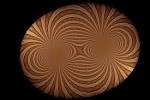
antineutrino |
antineutrino (physics) Existence of the antineutrino is experimentally confirmed by the Cowan–Reines neutrino experiment carried out by Clyde L. Cowan and Frederick Reines. |
|
30 Nov 1955
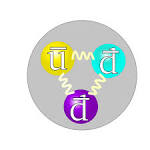
antineutron |
antineutron (physics) Existence of the antineutron is experimentally confirmed by University of California, Berkeley physicist Bruce Cork. |
|
30 Nov 1955

DIDO |
DIDO (physics) DIDO heavy water enriched uranium nuclear reactor begins operation at the Atomic Energy Research Establishment, Harwell, Oxfordshire. |
|
30 Nov 1955
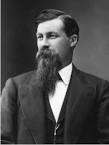
Chamberlin |
Chamberlin (technology) First Chamberlin electro-mechanical keyboard instrument, developed and patented by Wisconsin inventor Harry Chamberlin, is introduced. |
|
01 Jan 1956

Leon Festinger |
Leon Festinger (psychology) Leon Festinger, Henry W. Riecken and Stanley Schachter's book When Prophecy Fails provides a classic study of disconfirmed expectancy. |
|
03 Feb 1956

Émile Borel |
death Émile Borel Émile Borel (born 1871), mathematician. |
|
05 Feb 1956

First concrete TV tower |
First concrete TV tower In 1956, the world's first concrete television tower on the Hoher Bopser hill was inaugurated in Stuttgart, Germany, for Süddeutscher Rundfunk (now SWR). Instead of a steel girder transmitter mast, design engineers Fritz Leonhardt, Erwin Heinle and Rolf Gutbrod originated a 217-m steel-topped concrete needle to broadcast TV and FM radio. The observation decks three-fourths to the top provide tourists with views of Stuttgart, the local forests, vineyards and the Alps. It was built in 20 months at a cost of 4.2 million DM. Similar designs have since been used for many television towers around the world. The inauguration was attended by Anastas Iwanowitsch Mikojan, who later became head of state of the Soviet Union. |
|
28 Feb 1956

Frigyes Riesz |
death Frigyes Riesz Died 28 Feb 1956 at age 76 (born 22 Jan 1880). Hungarian mathematician and pioneer of functional analysis, which has found important applications to mathematical physics. His theorem, now called the Riesz-Fischer theorem, which he proved in 1907, is fundamental in the Fourier analysis of Hilbert space. It was the mathematical basis for proving that matrix mechanics and wave mechanics were equivalent. This is of fundamental importance in early quantum theory. His book Leçon's d'analyse fonctionnelle (written jointly with his student B Szökefalvi-Nagy) is one of the most readable accounts of functional analysis ever written. Beyond any mere abstraction for the sake of a structure theory, he was always turning back to the applications in some concrete and substantial situation. |
|
01 Mar 1956

Denham Harman |
Denham Harman (biology) Denham Harman proposes the free-radical theory of aging. |
|
13 Mar 1956

Daniel Cowan Jackling |
death Daniel Cowan Jackling Died 13 Mar 1956 at age 86 (born 14 Aug 1869). American mining engineer and metallurgist who founded the Utah Copper Company and with an economical method to process low-grade porphyry copper ores, below 2% copper. As electicity use expanded in the early 20th century, so demand for copper rose, and the need to exploit even low-grade ore. Such ore was obtained by open-pit mining then loaded by steam shovels into railroad cars and transported to concentrating mills. Jackling developed improved extraction/flotation processes to produce a higher-grade concentrate for smelting. By the time Jackling died, over 60% of the world's copper production took advantage of his low-grade ore processing methods. His Bingham Canyon Mine, now a huge pit, still produces copper. |
|
17 Mar 1956

Irène Joliot-Curie |
death Irène Joliot-Curie Irène Joliot-Curie (born 1897), scientist. |
|
22 Mar 1956
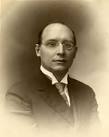
George Sarton |
death George Sarton George Sarton (born 1884), historian of science. |
|
31 Mar 1956

Space cabin |
Space cabin In 1956, the first U.S. space cabin simulator was tested. |
|
14 Apr 1956
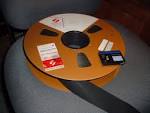
quadruplex videotape |
quadruplex videotape (technology) 2-inch quadruplex videotape, the first practical and commercially successful analog recording videotape format, is released for the broadcast television industry by Ampex of Redwood City, California. |
|
16 Apr 1956
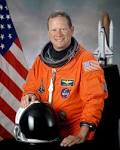
David M. Brown |
birth David M. Brown David M. Brown (died 2003), American astronaut. |
|
19 Apr 1956

Anne Glover |
birth Anne Glover Anne Glover, Scottish biologist. |
|
01 May 1956

Gilbert Plass |
Gilbert Plass (climatology) Gilbert Plass publishes his seminal article "The Carbon Dioxide Theory of Climate Change". |
|
01 May 1956

Minamata disease |
Minamata disease (medicine) Minamata disease epidemic is identified in Japan. |
|
20 May 1956

Marlene Zuk |
birth Marlene Zuk Marlene Zuk, American biologist. |
|
25 Aug 1956
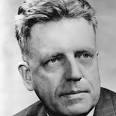
Alfred Kinsey |
death Alfred Kinsey Alfred Kinsey (born 1894), American biologist, professor of entomology and zoology, and sexologist who founded the Institute for Sex Research at Indiana University. |
|
27 Aug 1956
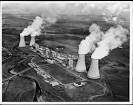
Calder Hall nuclear power station |
Calder Hall nuclear power station (technology) Calder Hall nuclear power station in England is first connected to the National Grid. This Magnox plant is the world's first nuclear power plant to deliver electricity in commercial quantities. Official opening is on October 17. |
|
13 Sep 1956

hard disk drive |
hard disk drive (computer science) The hard disk drive is invented by an IBM team led by Reynold B. Johnson. |
|
14 Sep 1956
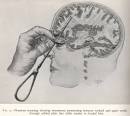
Lobotomy |
Lobotomy In 1956, the first U.S. prefrontal lobotomy surgery was performed. Surgeons J.W. Watts and Walter Freeman operated on a 63-year-old woman at the George Washington University Hospital. |
|
22 Sep 1956

Frederick Soddy |
death Frederick Soddy Frederick Soddy (born 1877), physical chemist. |
|
19 Oct 1956

Carlo Urbani |
birth Carlo Urbani Carlo Urbani (died 2003), Italian physician, discoverer of SARS. |
|
29 Oct 1956

Fritz Hofmann |
death Fritz Hofmann Died 29 Oct 1956 at age 90 (born 11 Feb 1866). Friedrich C. Hofmann was a German chemist who polymerized isoprene to create synthetic rubber (1909) while working as a senior chemist for Elberfelder Farbenfabriken vorm. Friedr. Bayer & Co. The process was granted the world's first patent for a “Method for producing synthetic rubber” (German No. 250690 on 12 Sep 1909). It began to solve the problem of the high cost of natural rubber as the need increased in the motor transportage age. Hofman had pursued the lead revealed by Carl Dietrich Harries who in 1905 had broken down natural rubber using ozone to reveal that it was formed from long chains in which many hundreds of isoprene molecules are bonded together. Hofman also studied the polymerization of butadiene and 2,3-dimethyl butadiene. |
|
01 Nov 1956

obesity hypoventilation syndrome |
obesity hypoventilation syndrome (medicine) The classic definition of obesity hypoventilation syndrome is published. |
|
10 Nov 1956

Henry Luke Bolley |
death Henry Luke Bolley Henry Luke Bolley (born 1865), plant pathologist. |
|
11 Nov 1956

Convair B-58 |
Convair B-58 (technology) First flight of Convair B-58, the first supersonic jet bomber capable of Mach 2 flight, designed by Robert H. Widmer. |
|
30 Nov 1956

First U.S. Regionally Televised Videotaped Broadcast |
First U.S. Regionally Televised Videotaped Broadcast In 1956, CBS became the first-ever network to broadcast from videotape. It was a rebroadcast to the West Coast of the 15-minute Douglas Edwards and the News program. It was recorded earlier on 2-inch tape with an Ampex Mark IV machine. NBC made the first nationally televised videotaped broadcast on 21 Jan 1957, promptly replaying President Dwight D. Eisenhower's oath of office for his second term inauguration. The videotape recorder invented by Ray Dolby was ready in Feb 1956 when Ampex had a successful in-house demonstration. After it was introduced at the annual CBS affiliates meeting in Chicago on 14 Apr 1956, taped programming quickly became the normal method in broadcasting |
|
01 Dec 1956
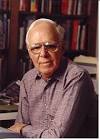
Martin Gardner |
Martin Gardner (mathematics) Martin Gardner begins his Mathematical Games column in Scientific American. |